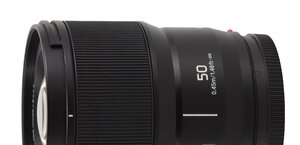Tamron 20-40 mm f/2.8 Di III VXD
7. Coma, astigmatism and bokeh
As you see coma correction is hardly one of the Tamron's 20-40 mm finest features but it would be also difficult to call its performance abysmally bad. You deal here with levels that are on the borderline between medium and high.
| Center, 20 mm, f/2.8 | Corner APS-C, 20 mm, f/2.8 | Corner FF, 20 mm, f/2.8 |

|

|

|
| Center, 30 mm, f/2.8 | Corner APS-C, 30 mm, f/2.8 | Corner FF, 30 mm, f/2.8 |

|

|

|
| Center, 40 mm, f/2.8 | Corner APS-C, 40 mm, f/2.8 | Corner FF, 40 mm, f/2.8 |

|

|

|
Please Support UsIf you enjoy our reviews and articles, and you want us to continue our work please, support our website by donating through PayPal. The funds are going to be used for paying our editorial team, renting servers, and equipping our testing studio; only that way we will be able to continue providing you interesting content for free. |
- - - - - - - - - - - - - - - - - - - - - - - - - - - - - - - - - - - - - - - - - - - - - - - -
Astigmatism, understood as an average difference between vertical and horizontal MTF50 function values, amounted to 7.3% and it's a level considered by us as low. You can also notice some small differences between particular focal lengths. Astigmatism reaches its minimum at 30 mm and increases on both ends of the focal range.
Defocused circles of light don't look perfect but, taking into account the fact that you deal here with a zoom lens with ultra wide angles of view, it would be difficult to complain. The only feature that sticks out is a brighter rim. The areas inside the circles aren't perfectly smooth and even but also they come without many heterogeneities that could be called conspicuous. There are also no visible problems with mechanical vignetting because it disappears completely on stopping down the lens by 1 EV.
| Center, 40 mm, f/2.8 | Corner APS-C, 40 mm, f/2.8 | Corner FF, 40 mm, f/2.8 |

|

|

|
| Center, 40 mm, f/4.0 | Corner APS-C, 40 mm, f/4.0 | Corner FF, 40 mm, f/4.0 |

|

|

|
| Center, 40 mm, f/5.6 | Corner APS-C, 40 mm, f/5.6 | Corner FF, 40 mm, f/5.6 |

|

|

|






